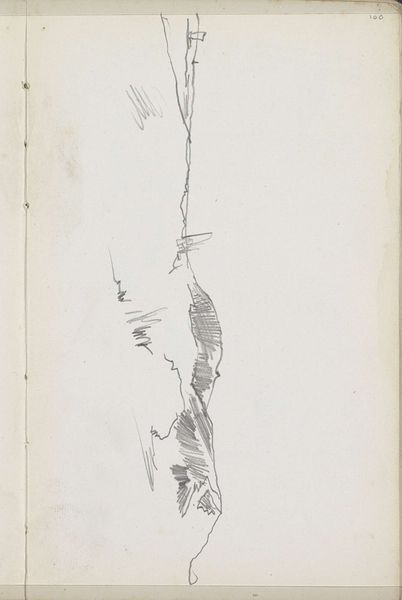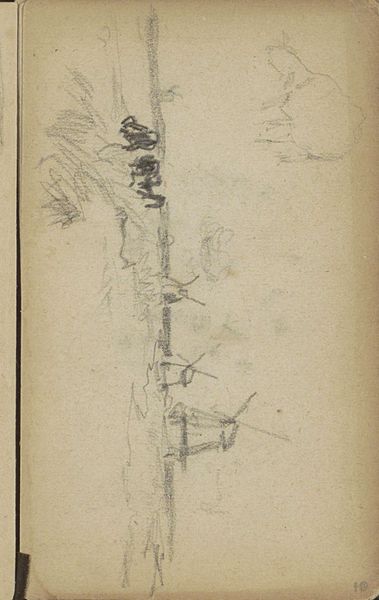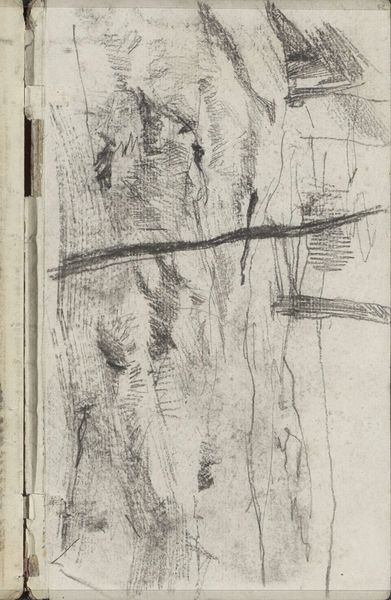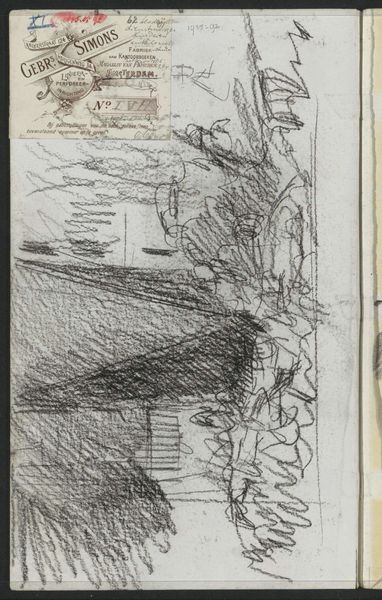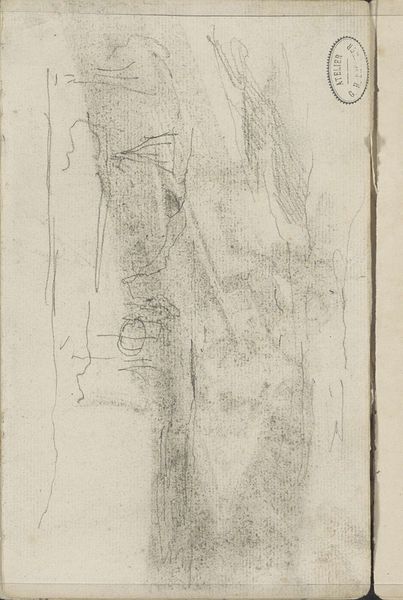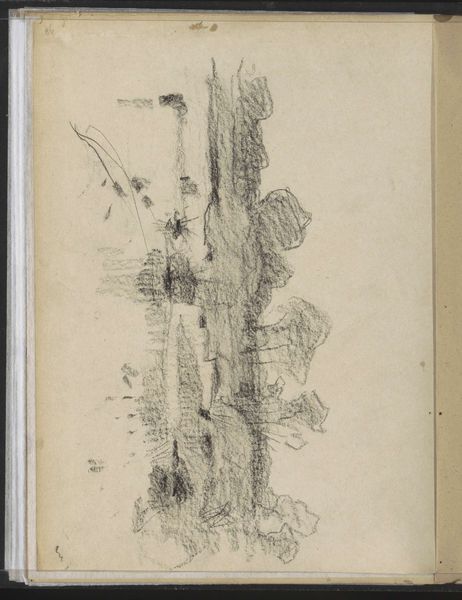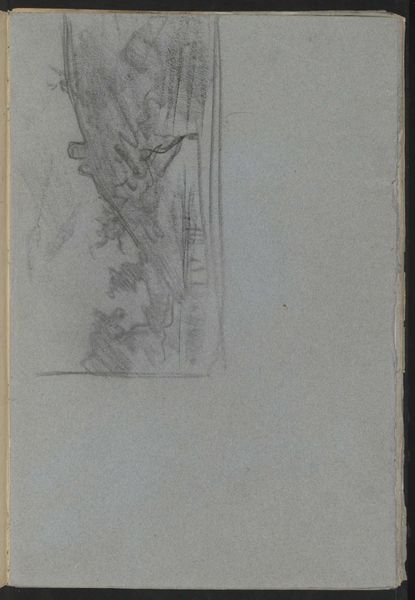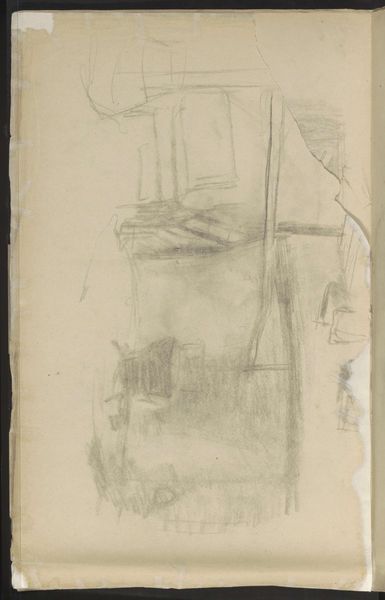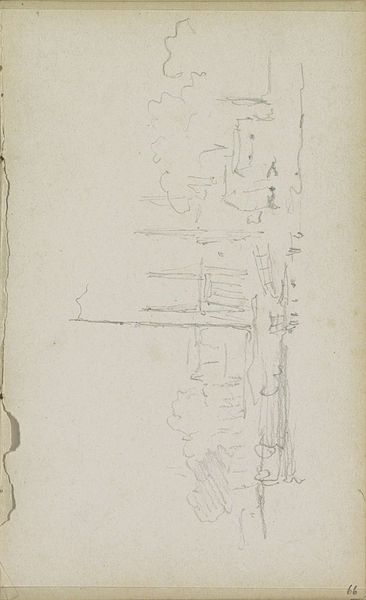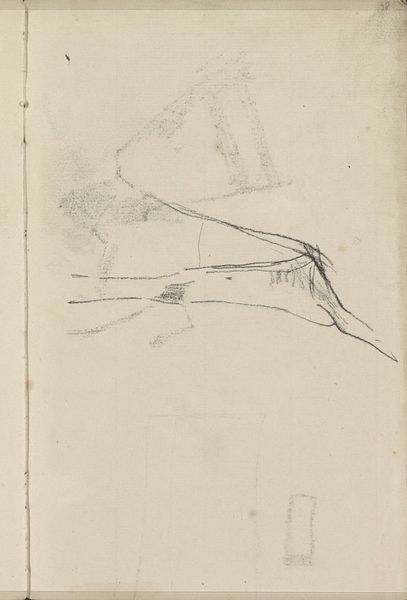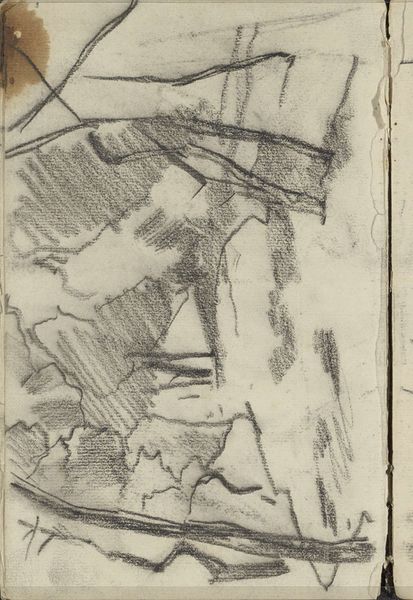
Studie, mogelijk van een boot in een landschap met wolkenlucht 1880 - 1882
0:00
0:00
drawing, pencil
#
drawing
#
quirky sketch
#
impressionism
#
sketch book
#
incomplete sketchy
#
landscape
#
personal sketchbook
#
idea generation sketch
#
sketchwork
#
pencil
#
sketchbook drawing
#
storyboard and sketchbook work
#
sketchbook art
#
initial sketch
Copyright: Rijks Museum: Open Domain
Editor: This is George Hendrik Breitner's "Study, possibly of a boat in a landscape with a cloudy sky," created between 1880 and 1882. It’s a pencil drawing currently held at the Rijksmuseum. The immediacy of the sketchwork really strikes me. What do you see in this piece? Curator: The frantic, almost frantic nature of the mark-making. Think about the economic realities for an artist at the time, especially one like Breitner who sought to depict modern, often working-class life. How much paper could he afford? Every mark had to count. The speed of execution becomes a material constraint and a deliberate choice. Editor: So, the "incomplete sketchy" aesthetic isn't just stylistic, it reflects real-world limitations? Curator: Exactly. Consider also the shift from academic painting, with its emphasis on meticulous finish, to impressionism’s focus on capturing fleeting moments. Breitner's sketch reflects the rise of industrial production – rapid, efficient. This sketch mirrors that ethos, even in its very materiality – a disposable, readily available page from a sketchbook, filled rapidly, almost aggressively. Editor: That makes me think about how the sketch might have served a practical purpose, rather than being purely artistic expression. A record of something seen? Curator: Precisely. Was this preparation for a larger work? A quick impression recorded for later use? The drawing's material reality opens avenues for understanding the labor involved in art making. Notice the marks – short, urgent. Breitner likely executed this rapidly, on site, reacting to a transient atmospheric effect. What does that say about his artistic choices given the context of how quickly consumer goods were also produced? Editor: I see what you mean. I'll definitely look at sketches differently now. It makes me think of other material constraints. Thanks for sharing that insight! Curator: The materiality reveals an intention and offers insights into the artistic process in 19th-century Dutch art. Thanks!
Comments
No comments
Be the first to comment and join the conversation on the ultimate creative platform.
